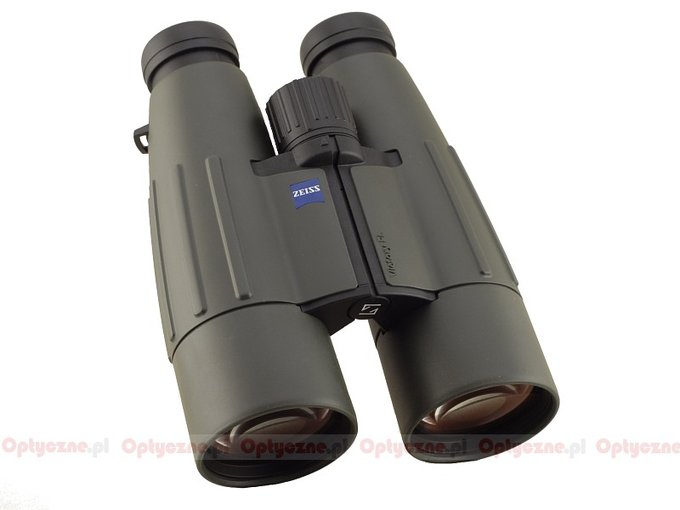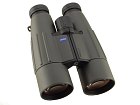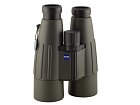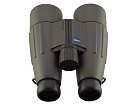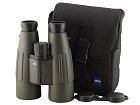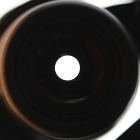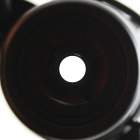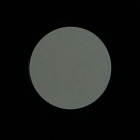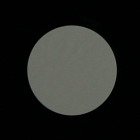Carl Zeiss Victory 8x56 T* FL
The Victory 8x56 T* FL model includes a three elements apochromatic objective lens (based on fluorite glass) before which we can find a single focusing element. Then there are Abbe-Koenig prisms and a 5-element eyepiece. The pictures below present the 8x56 model diagram and also the diagram of this model (at the very bottom) compared to the Zeiss Dialyt 8x56 T* Classic (top) and the earlier version of the Zeiss 8x56 Design Selection (in the middle).
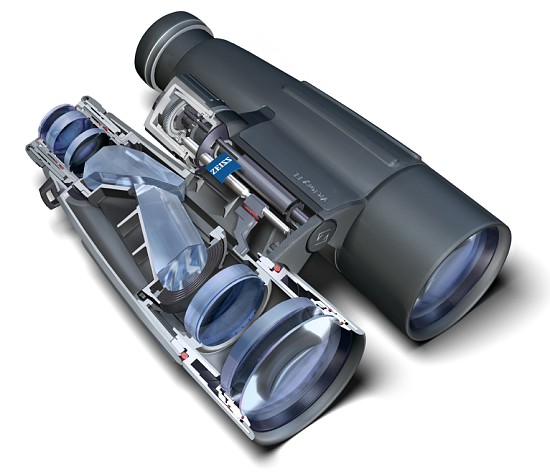 |
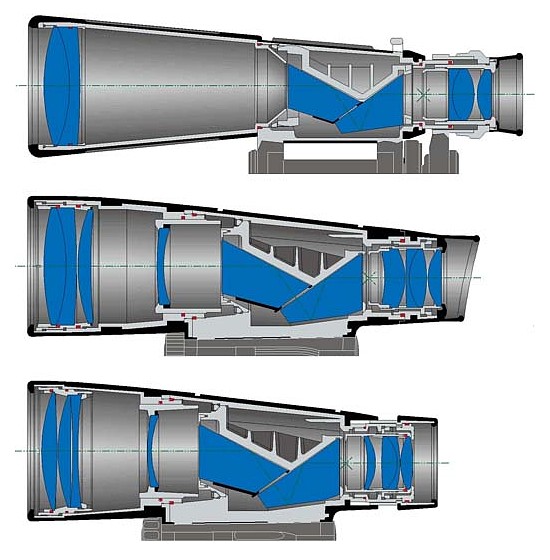 |
All air-to-glass surfaces were covered by the modern, efficient T* coatings which, combined with the Abbe- Koenig prisms based on the total internal reflection phenomenon, are supposed to ensure high transmission and splendid optical properties even in poor light conditions.
The binoculars’ polyamide and reinforced fibreglass barrel was covered by high quality rubber. It is waterproof down to a depth of 4 meters (400 mbar) and nitrogen-filled. You can be sure of comfortable work in the temperature range from –30 to +60 degrees Centigrade.
The buyer gets a neoprene strap, a cordura case and caps included in box. Additionally, you can buy an optional tripod adapter and a 3x12 monocular, which allows a 3x factor of magnification. The binoculars come with a 10-year-long guarantee.
| Magnification | Lens diameter | Angular field of view | Prisms | Eye relief | Weight | Price |
|---|---|---|---|---|---|---|
| 8 | 56 | 130/1000(7.4o) | BaK-4/roof | 16 mm | 1220 g | 5700 PLN |
Summary
Pros:
- high transmission,
- the widest field of vision in this equipment class,
- low chromatic aberration,
- slight astigmatism,
- relatively well corrected coma,
- negligible light fall-off at the edge of the field,
- good whiteness rendition,
- perfectly circular pupils on a black background,
- high quality of barrel and solid workmanship,
- small distance of minimum focus,
- good blackening inside inner tubes,
- high class Bak-4 prisms in the Abbe-Koenig system,
- excellent antireflection coatings,
- good guarantee conditions.
Cons:
- a bit too high distortion.
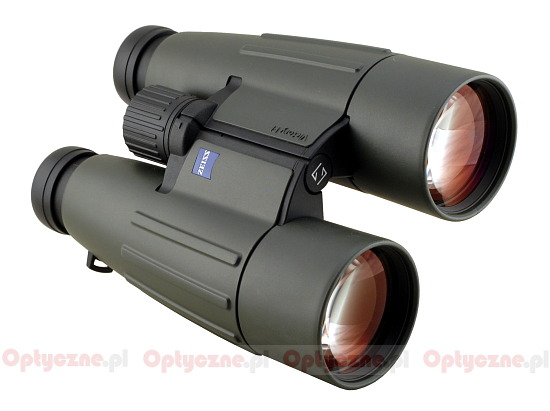 |
As you see the mere comparison of the pros and cons lists shows unambiguously what kind of equipment we are dealing with. You can hardly expect less, though, from such a world-famous producer as Zeiss and at such a price.
The only slip-up which we notice here is connected with distortion. The Victory series have problems with correcting it; it was also the main trouble in the case of the 10x42 model which won our 10x42 binoculars test. Here that flaw is easier to explain and to forgive because the Victory 8x56 model has the widest field of view in its class. Most of the 8x56 class binoculars, even from very renowned producers, feature the field of view in the range of 6.0-6.8 degrees. The Zeiss has as big field as 7.4 degrees, clearly outclassing all the rivals. Some blur at the edge of such a big field and a tad higher distortion can be easily forgiven in such a situation.
The transmission graph, which we present below, is something interesting to look at.
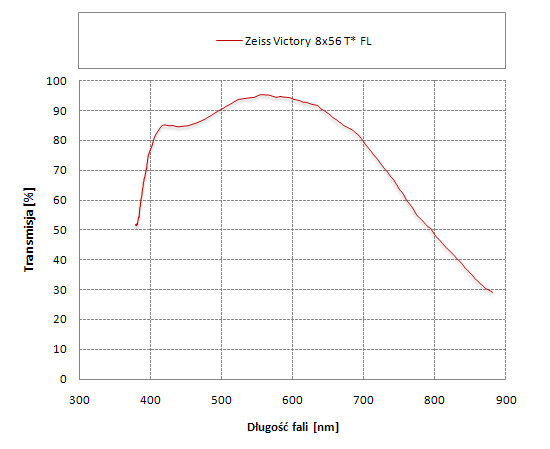 |
In the middle of the visible spectrum the transmission reaches a very high value of 95%. On average that parameter, in the width range of almost 100 nm, gives also a very high result of 93.6%. What’s interesting for the high transmission in the centre of the range we must pay by lower result in the blue part of the spectrum – lower even than in the case of the cheaper Dialyt, tested before. That’s why we also gave a lower mark that the Dialyt’s for colour rendition .
What’s interesting, although Zeiss coatings are one of the best in the world, Docter has grown to be a leader in this category too. Both its models - a porroprismatic Nobilem 8x56 and a roof prism 8x58 - had the results a tad better than the Zeiss. As all the devices, described here, have the prisms based on the principle of the total internal reflection so the transmission depends mainly on the coatings and the number of optical elements. Both Docters lag behind the Zeiss when it comes to the field of vision and it is, after all, one of the most important parameters we take into account choosing a set of binoculars.
To sum up, the large field of view, paradoxically, was the main reason why the Zeiss lost to the Docter Nobilem or to the Swarovski SLC New. By just slightly reducing the field of view from 7.4 to, say, about 7 degrees would give it just minimally less points in the “field of view” and “eyepieces’ field of view” categories but it would make the marks in such categories as “distortion”, “coma”, or “resolution at the edge of field” significantly better. Maybe it would even allow the Zeiss to top our ranking.
This situation only confirms what we’ve written many times – points and the test result per se are not enough. They might provide some tips but they are not an oracle. It might happen that a model with a bit worse score will prove to be better in some situations. Apart from that, so far nobody has constructed such a point scale and such test criteria which would please everyone.




